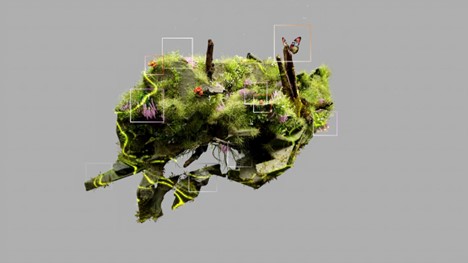In the creative process, hundreds of diverse ideas can arise. However, some of them must be abandoned simply because many cannot envision how these ideas could be implemented. With AI technology, entirely new opportunities and decision-making options become accessible through technologies like the Odyssey’s Explorer tool.
What is Explorer Tool?
Odyssey, a startup founded by Oliver Cameron and Jeff Hawke, introduced a new tool called Explorer2. This tool is powered by AI and transforms text and images into 3D visualizations. Any textual prompt can be converted into an interactive real-time scene. The tool has been trained on real-world landscapes, making it particularly effective for creating photorealistic scenes.
Explorer tool is fundamentally a part of the AI field of generative world models. This rapidly developing domain is revolutionizing video production capabilities. Such models are trained using diverse data, including photos, audio, video recordings, and textual material1. These datasets enable the tool to generate internal visual representations of how the world operates and reason about the consequences of various actions.
This tool can indeed be one of the innovative solutions used in the creative process. According to Odyssey, results generated by this tool can be exported to other software, such as Adobe After Effects or Blender, where the creative process can be extended. This is possible due to an older volumetric rendering technique known as Gaussian splatting.
Although the Odyssey’s Explorer tool can be useful in various fields, it does have some limitations compared to modern technological capabilities. One of the most significant limitations is the 10-minute wait time required to generate scenes. While this might seem brief, it surpasses the expectations of users accustomed to faster AI-powered tools.
Additionally, the quality of the generated scenes may be somewhat underwhelming due to relatively low resolution. Current challenges include hallucination risks, bias in training data, and high computational requirements for such promising models.
Applications of the Explorer Tool
Summarizing the tool’s core functionality, it’s worth mentioning that it has been trained on real-world landscapes using a specially designed 360-degree backpack camera system. This enables the AI tool to analyse environments and create realistic visuals.
Despite ongoing challenges in applying this and similar tools, it remains a progressive and promising future technology. It is valuable both to visual content creators seeking practical solutions for implementing ideas and to enhancing user experiences through its capabilities.
First, the Explorer tool can be applied in the film industry. It can be used during filming to create individual scenes or specific elements, such as decorations, which can later be adapted in other mentioned creative software.
Additionally, it offers new possibilities in gaming and virtual or augmented reality entertainment services. Such tools generate highly realistic environments in video games, tailored to specific user actions.
Final Word
In conclusion, Odyssey’s Explorer tool is an excellent example of how AI-powered new technologies are transforming creative processes and enhancing user experiences. While certain challenges remain, the current capabilities and potential of this technology suggest that its possibilities will only improve in the future.
If you are interested in this topic, we suggest you check our articles:
Sources: AIbase, Odyssey, TechCrunch1, TechCrunch2

